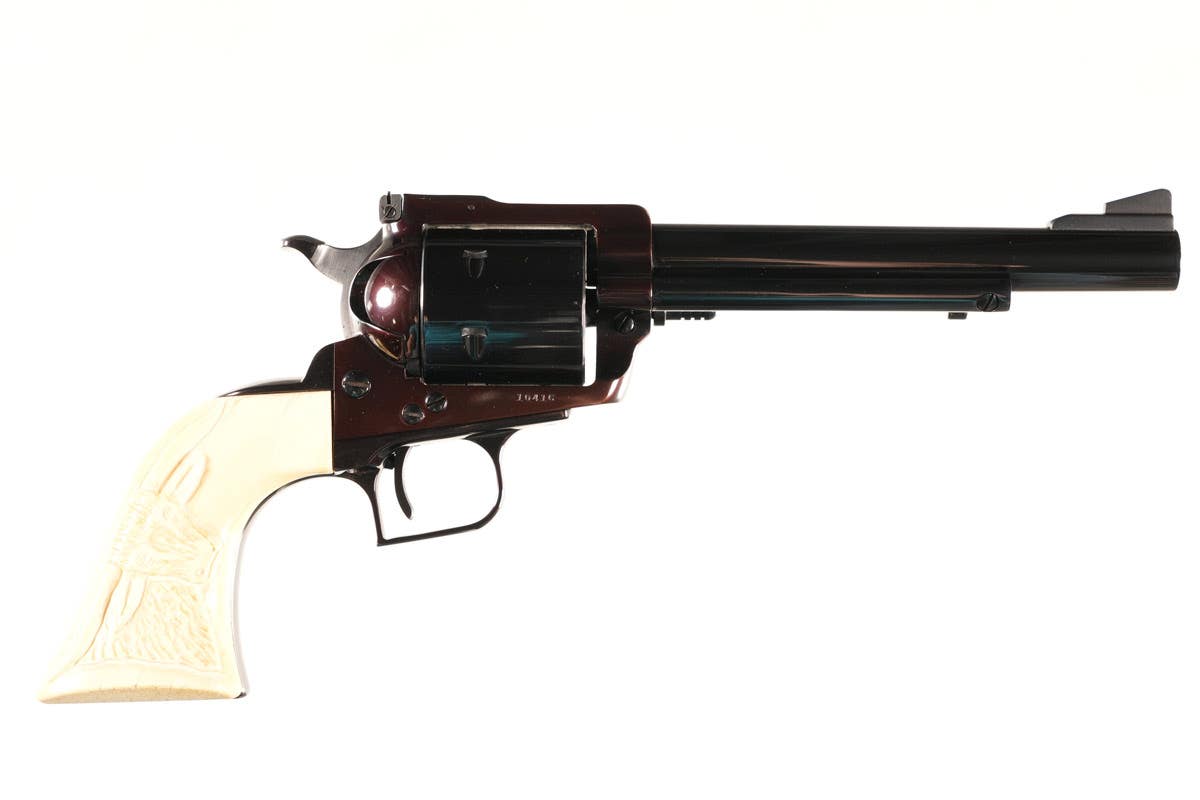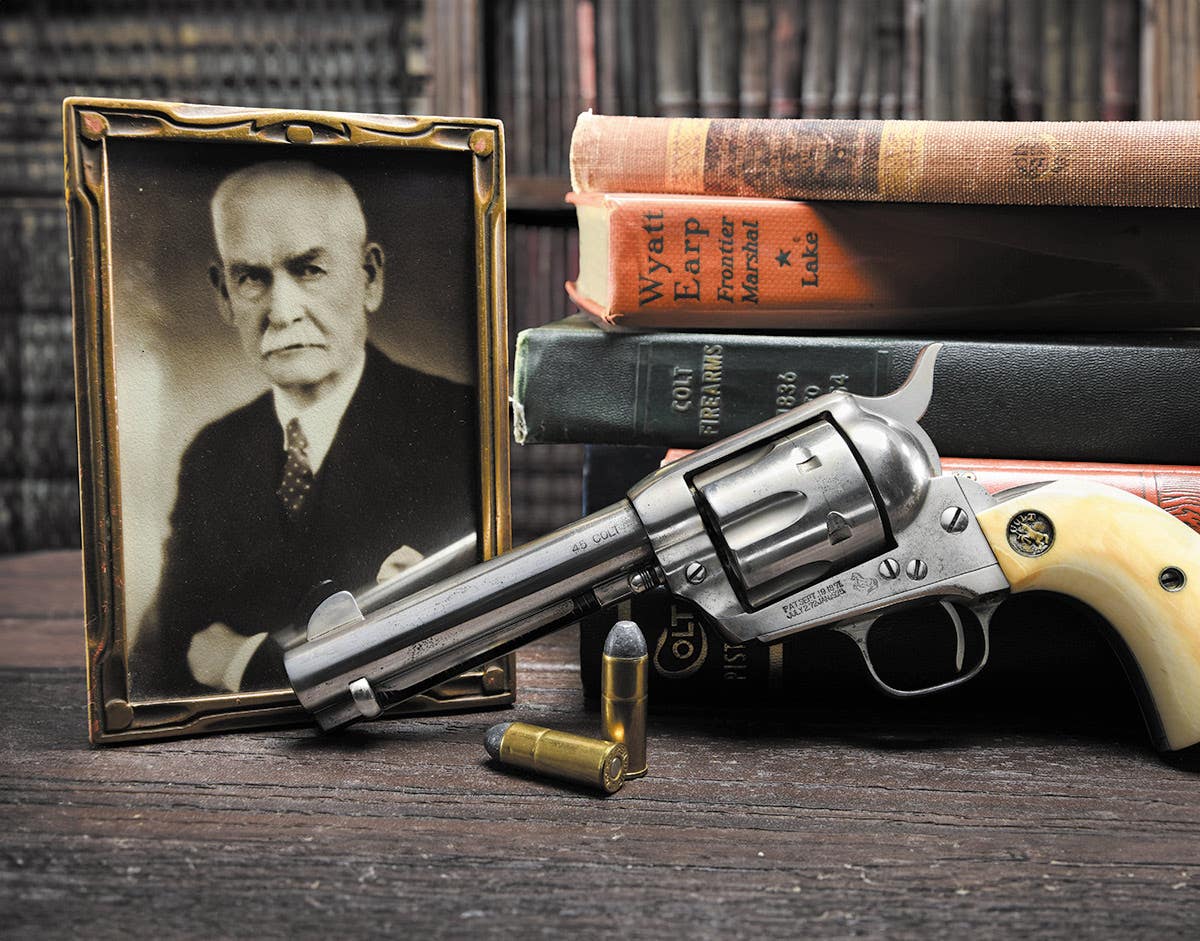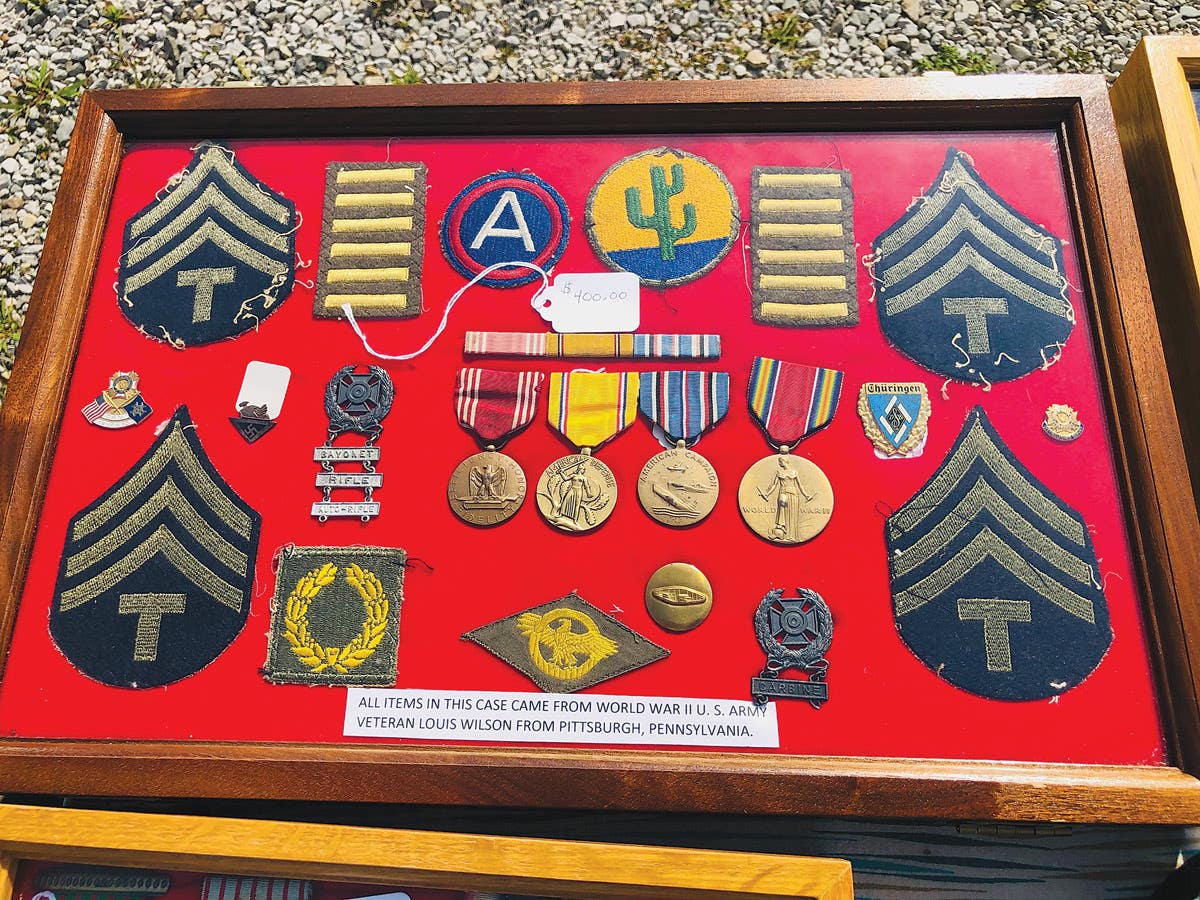Militaria Mindset: MT Talks with Larry and Terri Stewart
Career in militaria has been an interesting journey
By Andrew L. Turner
In the 1950s, in Doylestown, Pennsylvania, nearly every kid had a father, uncle, or older brother who was a WWII veteran. At the age of five or six, Larry Stewart, of Stewart’s Military Antiques (www.stewartsmilitaryantiques.com), remembers some of the older kids talking about an SS officer’s white tunic that one of the fathers had brought home from Europe. “I think that was my first awareness of militaria,” he said. “The kids down the street had a beat-up Luftwaffe helmet we played army with – man, we thought that helmet was heavy.”
He remembered war trophies at a local gunshop. “Stacked on the floor were 30 or so German helmets—all of them totally original and priced at $5 each,” he remembered. “I couldn’t believe my eyes. I always wanted a German helmet, but with an allowance of 50 cents a week, and a pressing need to buy more Airfix Army Men, they might as well have been $500.”
On Christmas 1963, Stewart’s father bestowed upon him a Prussian 1915 enlisted Pickelhaube. “I?couldn’t believe it, Dad had gone back to the gunshop and bought this helmet,” he said. “That was the first military relic I?ever owned and it?is in my possession to this day; I will never sell it.”
When Stewart was living in Arizona in the 1970s, a visit to “Gunsmoke Gunshop” in Scottsdale renewed his interest in militaria. “When I walked in the door there were helmets and hats of every description. There were barrels of bayonets, and rows of antique rifles and swords,” he remembered. “I bought my first WWII helmet that day. It was a nice German M1940 Army for $25. For the next three years, I spent every Saturday and most of my spare money in that shop.”
Larry met his wife Terri in 1975 and they married two years later. Their mutual interest in antiques set the stage, and they opened their first booth in a Scottsdale antique mall. They continually enlarged their display space until, in 1994, they opened their first shop in downtown Mesa. Larry quit his job in 1991, and Terri followed suit in 1998, to fully devote their time to their business.
By 1999, they opened their Web site, www.stewartsmilitaryantiques.com. “We’ve been blessed with good business ever since,” he said, “to the point of closing our brick and mortar shop to concentrate on mail order and shows.”
That same year, the couple traveled to Germany to load and ship a container of WWII German artifacts to the U.S. Much of the material was stored up two flights of stairs in a WWII Luftschutz air raid bunker. “We’re not talkin’ boxes of?Iron Crosses and the like,” Stewart said. “Oh no, it was crates of gas mask cans, large wooden ammunition boxes and best of all, a steel, two-wheeled ammunition wagon. To top it off, the interior hall lights were on a timer, giving you?sixty seconds or so to climb the stairs and proceed to?the storage cubicle before the lights went out, and you?were plunged into inky darkness. Looking back, that was a lot of fun, but it sure was a lot of work at the time—especially when we had to load the 250 liter Wehrmacht fuel drums!”
Their career in militaria has been an interesting journey. “We count one of the main pleasures of our work to be the many close friends and customers that we have been blessed with worldwide,” he said. “Our business has become a way of life for us and we treasure those who have made it possible.”
Larry was reminded of this while loading in to the 2009 MAX show in Monroeville, Pennsylvania. “I looked up at the?people waiting to go into the show and I recognized?the faces of people?we have known for over 25 years,” he said.? “In addition, we have enjoyed meeting?hundreds of WWI and WWII veterans, both men and women, German and American, who have shared their stories with us and enriched our lives. We thank you with our hearts.”
Stewart said it is important for those who have been in the business for decades to help new collectors along their way.?
“We older collectors?need to encourage and teach the fellows coming up behind us,” he said. “They are, after all, the future of our hobby.”
Stewart sees fraudulent activity as a huge obstacle. “We should also take a stronger stance regarding the issue of fakes and copies,” he said. “It is the single most debilitating aspect of collecting militaria, especially in the world of German WWII collectibles.”
He said all German WWII items are suspect, with most categories of the rarest material needing a committee approval in order to be?judged as “real” or not. “Oft times the?experts’?expertise is limited by the amount of original material that has passed through their hands over the years,” he said. “None of us have seen it all, and I feel as if I know less about the subject as time goes on. I do?honestly feel that a lot of good original material is cast aside because it doesn’t?match the one or two examples that the so-called expert has in his collection.”
The Stewarts encourage new collectors to enjoy the hobby. “Don’t just think of your purchases as a sideline to your 401k,” Larry said. “Treasure them for the historic artifacts they are.” He encourages new collectors to buy reference books, attend shows, handle as much original material as they can, join the online forums, and to think for themselves.
“Each little?piece has a story to tell in its own way, and, as it has been said many times before by many others, we are only the caretakers of these things. They will be here long after we are gone and they deserve the best care and handling we can give them.”
Let us know what you think in the Military Message Board







